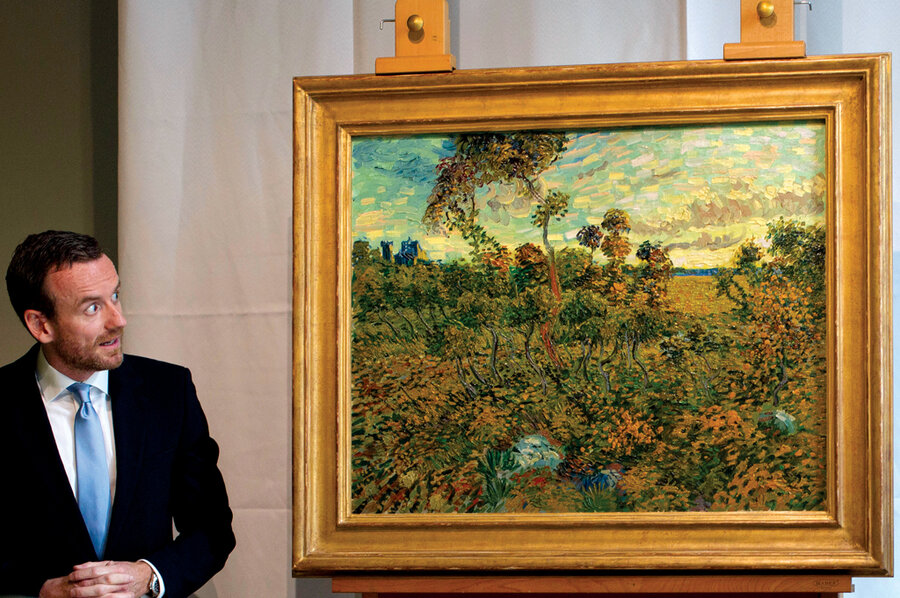Once a fraud, now a masterpiece
Loading...
In a footnote in an art journal, experts describe pinning down the type of oak depicted in a 19th-century painting “on the basis of acorns gathered from the same spot.”
The note in the October issue of The Burlington Magazine, a monthly publication devoted to the fine and decorative arts published in London, hints at how far experts will go to confirm a painting is the work of a master. The acorn clue was just one of many that allowed Amsterdam’s Van Gogh Museum to announce in September that “Sunset at Montmajour,” owned by anonymous private collectors and once dismissed as a fake, was indeed a Van Gogh.
We live in an age of data and the means to share it instantly and widely. For the art world, experts don’t even need to be in the same room to apply new technology and compare findings about who painted what. This has led to a spate of recent discoveries that, in addition to the Van Gogh, includes a Leonardo da Vinci, a Titian, even a Brueghel the Younger unearthed in a Kenyan home. While the world’s store of masterpieces is limited, more discoveries are likely as private collections come to light and connoisseurs probe the validity of their artwork. The sea of information could also make life more difficult for forgers because it is easier to check their claims.
In the case of “Sunset at Montmajour,” researchers tracked down gallery catalogs and sales records, and subjected the canvas and paint to painstaking scientific analysis. Descriptions from Van Gogh’s letters also helped. The Van Gogh Museum constantly updates www.vangoghletters.org, a digital trove accessible anywhere.
“They just had more data to come up with a solid attribution,” says Timothy Standring, the Denver Art Museum’s head of painting and sculpture.
Don Johnson, an electrical engineer at Rice University who consulted with the Van Gogh Museum on “Sunset at Montmajour,” has become known in the art world as “the guy who counts threads.” Mr. Johnson has amassed a database of thread count analyses of the canvases of more than 400 Van Goghs. By making comparisons, curators can determine whether materials in any given painting were likely to have been used by the Dutch Post-Impressionist.
Johnson’s entire database includes 750 paintings, the earliest dating to the 15th century. He recently began working with the Art Institute of Chicago to build a database of its Impressionist collection.
Mr. Standring says that technological advances aside, the aesthetic element remains important. The right questions don’t get asked, he says, “without that intuitive sense of the human eye that, with the mind, puts it all together.”







